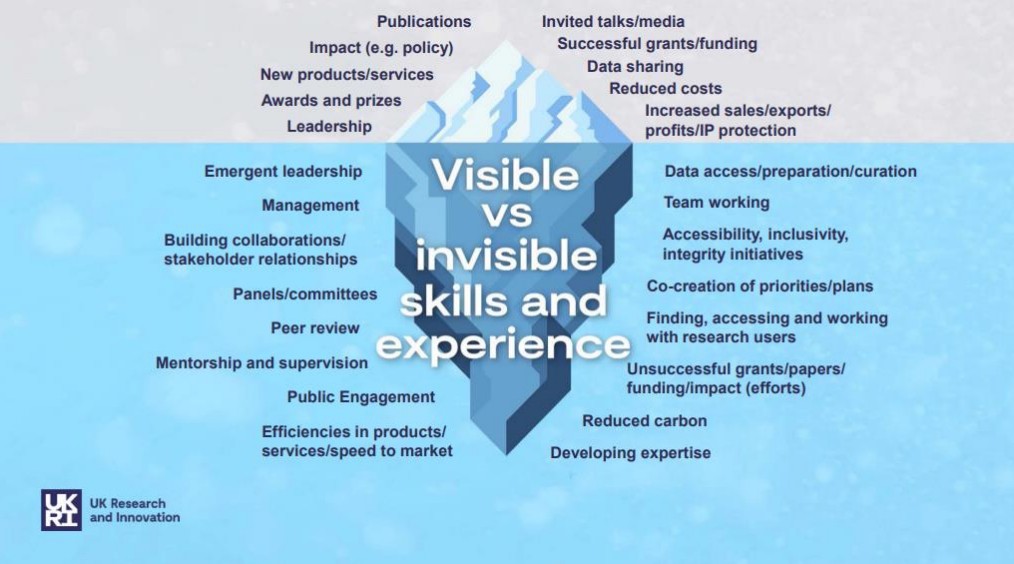
Understanding Narrative CVs
Narrative CVs are a new way to talk about your career, research, impact and and outputs. They are increasingly used as part of funding applications, and sometimes used in job or promotion processes. They aim to broaden the information presented and assessed. This guide will get you started, and signposts key online resources that will help you develop yours.
This LSE blog post (2023) (Bordignon et al.) discusses the five most frequently cited reasons for using NCVs (6 minute read).
If you have a little more time, this NIHR resource (2022) (Meadmore et al.) notes key considerations relating to their use, given that NCVs are a new and developing tool in research assessment.
Finding your Evidence
There are several ‘modules’ or sections to a narrative CV, each asking you for information about your contributions to research in different areas. These are typically: 1) the generation of knowledge; 2) the development of the research team; 3) the wider ‘research environment’; and 4) (sometimes) to wider society. Funders are keen to recognise a variety of different contributions. Spend time thinking of all the different tasks and outputs you have and which would usefully go in each section. The slide below, from UKRI, will give you some instant ideas.
If you don’t have much time, take a look at this great resource: Narrative CVs: a Guide for Applicants (2023) from the University of Oxford (especially pp 4-9). It gives suggestions for content under each module heading that you could adapt or find inspiring.
If you have a little more time, take a look at this Miro board. What can you borrow, edit or change? Work with colleagues to help remind you of all your activities. Funders have indicated that not all the sections have to be as full as others.
Drafting Evidence
Having decided on your examples, you’ll need to structure them effectively to provide more information about how you conduct your research. While funders don’t give examples about what makes a ‘good’ narrative CV, it is sensible to think through some evidence for each statement you make.
You should explain WHAT you did + HOW you did it + SO WHAT?
Download and use the excellent nine-page Narrative CVs: a Guide for Applicants (2023) from the University of Oxford. It’s a step-by-step guide through the process of NCV drafting.
The Researcher Impact Framework (Trinity College Dublin) gives detailed advice (see pp8-16 for examples, and p22 for questions to check that you have included everything you need).
Credits: Written by Kate Murray, Careers Consultant for Researchers, ARRC with input and feedback from Research Facilitators across the University of Cambridge, particularly Naomi Hilton; designed by Marie Collier, Engagement Coordinator, ARRC; copyedited by Becky Ioppolo, Research Associate, ARRC; and additional input from other ARRC colleagues. Feb 2024





